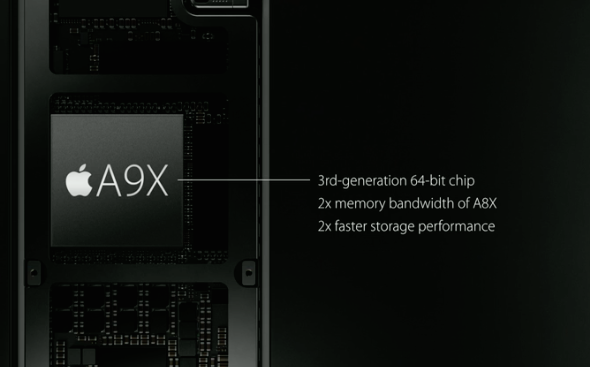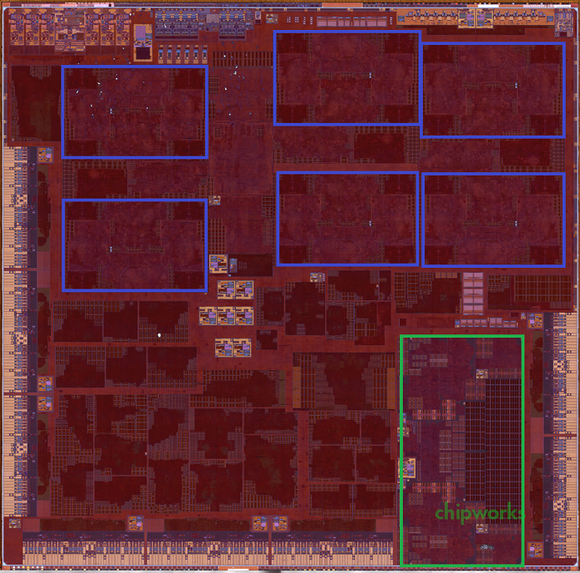
Apple is making its GPU to cut the cord from Imagination Technologies and has been secretly developing its own GPU in-house for a few years now. That’s what a sketchy rumor published Thursday by Fudzilla contends, citing sources in the graphics industry.
An in-house-designed GPU would let Apple reduce the cost of its own mobile chipsets further. More importantly, such a move would help it advance the iPhone and iPad’s graphics capabilities beyond what Imagination’s designs (that Apple licenses) permit.
For end users, this should result in an even smoother iOS and flashier graphics in games (the overhyped term “console-quality” comes to mind) with more realistic special effects.
A risky endeavor
“Rome hasn’t been built in a day and it sure takes at least a few years to create a fully functional mobile GPU,“ reads the report. “This is why Apple has been working under extreme secrecy for a few years,” according to Fudzilla’s source in the graphics industry.

Apple A8X floorplan courtesy of chipworks (blue rectangles are GPUs).
Indeed, developing a mobile GPU is an incredibly challenging endeavor.
Take, for instance, Samsung which has been developing a mobile GPU of its own for more than half of a decade and yet has nothing to show for it. In fact, the South Korean firm has yet to ship its own custom CPU cores, which should debut along with its new Exynos 8890 chipset in 2016.
With that in mind, an Apple-developed GPU might take years to ship. The report also states that Apple is not working on a LTE/4G modem chip for the iPhone 7, as previously suspected. “It has already given the work to Intel for the future iPhone,” writes Fudzilla.
Apple and Imagination Technologies
Apple’s been designing iOS device chipsets in-house for years now. It originally licensed GPU cores from Imagination, a fabless UK-semiconductor maker in which Apple has invested, and CPU cores from ARM, another UK-based fabless outlet.
Apple’s engineers tweaked those designs to its needs and applied various optimization and power-saving techniques. But starting with the A7 chip in 2013, Apple stopped licensing ARM designs and started developing its own fully customized CPU cores.

The GPU cores in A-series chipsets, however, continue to be licensed Imagination designs. The iPad Pro’s A9X chipset, for instances, packs in Imagination’s six-core PowerVR Series 7XT GT7600 GPU.
Tile-based rendering vs. shaders
The biggest problem in using Imagination’s GPUs is their reliance on tile-based rendering, a technique that results in fast graphics but with limited special effects.

It’s a reasonably efficient way of painting pixels on the screen, but it requires plenty of dedicated bandwidth. GPUs from Nvidia and AMD, on the other hand, feature so-called shaders that create ambiance with materials and surfaces that mimic reality.
Wrapping it up
We know Apple hired graphics experts from both AMD and Nvidia and common sense tells us these experts probably are not wasting their time and expertise optimizing AMD and Nvidia GPUs for use in the Mac, as some suggested.
And if talk of a fifth-generation Apple TV with a “dramatically improved” graphics and “new hardware functions” has any merit to it, Apple could be looking to boost its graphics prowess to take on dedicated gaming consoles whilst tackling the technological challenges of outfitting future iPhones and iPads with 4K screens.
No comments:
Post a Comment